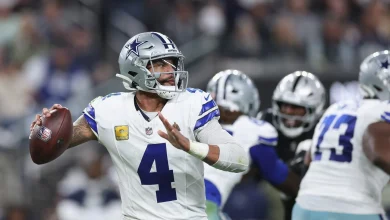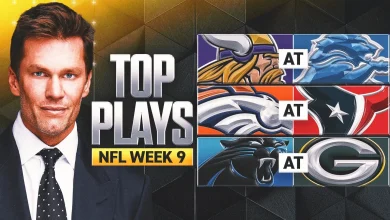On the 30th Anniversary of Its Release, It’s Time ‘Casino’ Took Its Rightful Place as a Scorsese Classic

Martin Scorsese’s “Casino” was released 30 years ago today (on Nov. 22, 1995), and I have no problem saying that I think it’s a Scorsese masterpiece. But I didn’t say that, or anything close to it, when I originally reviewed the film. And I was far from alone. When “Casino” first came out, it provoked a mixed response, on the part of both critics and audiences. And I think it’s easy to see why. Though packed with Scorsese’s virtuosity, the film seemed almost too conscious of its own bravura. For a lot of us, it was bedazzling in a slightly detached and even opaque way.
The movie marked Scorsese’s return to the glittering, fast-talk mode of Mob docudrama he’d pioneered five years before with “GoodFellas” (both films were based on nonfiction books by Nicholas Pileggi, with scripts by Pileggi and Scorsese). “GoodFellas,” for all its brutality, was a beloved movie, because people thought of it as a joyride to the dark side. “Casino” was colder, longer (three hours!), less relatable, more overstuffed with underworld information, and it had a hero, Robert De Niro’s implacable sports-gambler-turned-Vegas-casino-operator Sam “Ace” Rothstein, who wasn’t exactly easy to cozy up to. At the time, “Casino” struck a lot of people, including me, as both more than “GoodFellas” and less. It felt visibly top-heavy with Scorsese’s ambition to outdo what he’d done before.
And that’s how I’ve thought of it for most of three decades — at least, until I saw it again a few years ago, and what happened took me by surprise. The movie blew me away.
LISTEN: ‘Daily Variety’ Podcast — Revisiting Martin Scorsese’s ‘Casino’ With Owen Gleiberman
I was mesmerized from the opening moments: the hallucinatory lights-of-Vegas credits, the ironic surge of Bach’s “St. Matthew Passion” on the soundtrack as Ace, in his pink jacket, gets into the boxy ’70s car that blows up, and the hypnotic extended sequence in which Ace explains in voice-over how the casino operates, and Scorsese’s rushing camera seems to be everywhere at once, darting through the gaming parlors of the Tangiers, taking us back into the counting room to show us how the skim works, mapping out the hustlers and the gangsters and the suckers and the bosses back in Kansas City, channeling the thrill of the bet, showing it to us in close-up detail, but also filling us in on the big picture, which is that it’s all a grand illusion, because in legalized gambling there is (as Ace puts it) only one winner, and it’s the people who own the casino. Everyone else is feeding them.
What shocked me, this time, is that the hypnotic quality of that opening sequence didn’t ebb away. I sat there riveted, for the entire movie, sinking into the nuances in a way I hadn’t before, seeing how it all fit together: Ace’s impeccable style and threatening manners and control-freak way of running the casino, and the hunger inside him that’s driving it all; the recklessness and wild-card cunning of Joe Pesci’s Nicky Santoro, who’s like a richer, more fascinating variation on his Tommy DeVito in “GoodFellas”; and the way Sharon Stone, playing the impassioned gold-digger Ginger McKenna, gives a lacerating performance that is nothing short of extraordinary, showing you how wily and scurrilous Ginger can be, but also humanizing the damage that drives her. The film starts out as crime-syndicate psychodrama and descends into a scandalous underworld “Scenes from a Marriage.” And the rock ‘n’ roll! If it’s hard to highlight any one needle drop (though the “Can’t You Hear Me Knocking” montage is simply undeniable), that’s because Scorsese now weaves those golden oldies into a dream collage, orchestrating the movie like a jukebox that never stops shuffling.
Sharon Stone in “Casino” (Universal/courtesy Everett Collection)
©Universal/Courtesy Everett Col
So what changed for me? What did I, and a lot of other Scorsese fans, miss the first time? I think “Casino” was experienced far too much through the lens of “GoodFellas.” That film was a work of fabled perfection (though I’ve never shaken the feeling that Ray Liotta was miscast); it had an adrenaline-shot exuberance that made it a violent Mafia-party hangout movie. “Casino,” by comparison, seemed a party with the bliss chilled out of it. Yet that’s kind of like saying that “Macbeth” isn’t “Hamlet.” If you forget about “GoodFellas,” “Casino” casts its own daunting spell. It’s a vision of what it looks like when money fever becomes the life force. The movie could almost be called “Money,” because that’s the obsession that brings everyone in it down.
At the same time, it’s Scorsese’s darkest Mob drama. When you look at the great Scorsese underworld movies, going back to “Mean Streets” (1973), there’s a paradox built into every one of them. Scorsese, in the very cells of his cinematic being, wants to live in those worlds, to feel as intensely as the characters feel. He’s a saintly rationalist who wants to touch the burn. Yet he also wants to demonstrate the price — to show us that it’s not worth it. And he has never scraped the varnish off the underworld as definitively as he does in “Casino.” That’s what makes the movie not just a masterpiece but such a forbidding one. It’s Scorsese’s most pitiless reckoning of the wages of sin.





